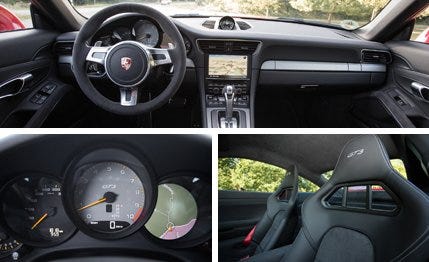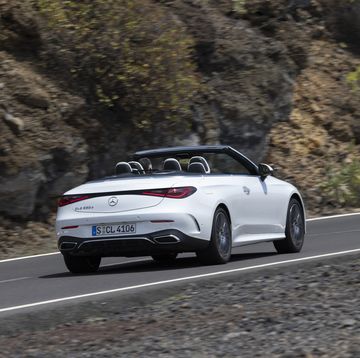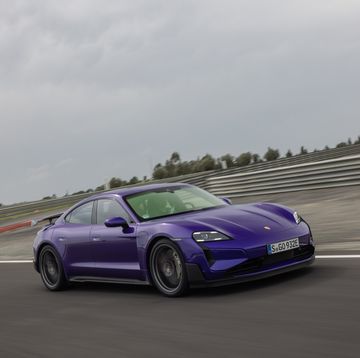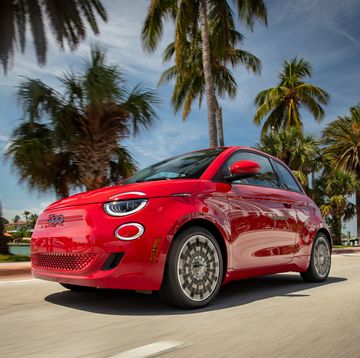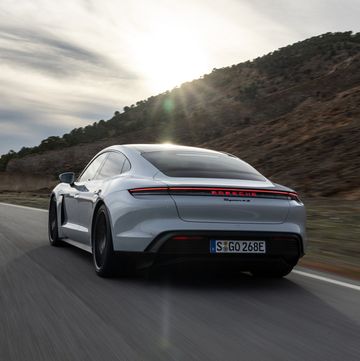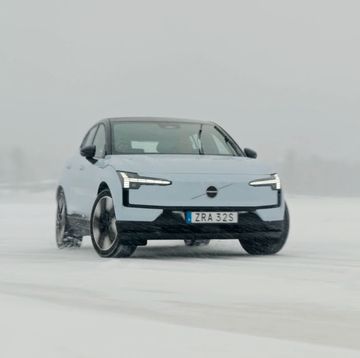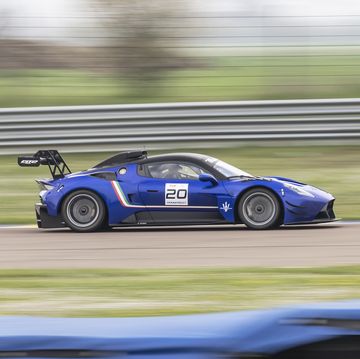Shocking news: The new Porsche 911 GT3 is terrible! It’s a huge disappointment, a broken dream. Cancel your deposit if you’ve made one, and tear up your check if you haven’t. And write to the German ambassador to demand some kind of formal inquiry.
No, not really. We’re just kidding. There’s an inevitability to the script when it comes to new iterations of Porsche’s performance models, especially the few deemed worthy of the “GT” and “RS” badges. And the new 991-gen GT3 hits every mark and gets off every line. To abandon any pretense of suspense, it’s fantastic—grippier, revvier, and better to drive than its already-epic predecessor. And after our first spin in a preproduction example in Europe, we wonder if this isn’t a car that’s good enough to raise serious questions over whether it’s worth spending more on anything else.
Let’s start with the basics. Fears that the new-generation direct-injection flat-six would fail to match the character of the old motorsport-derived Mezger unit are, thankfully, unfounded. The new engine is proof that it’s still possible to produce a naturally aspirated engine capable of meeting tougher emissions standards and generating its power through the old-fashioned method of revving into the lower stratosphere. The motor produces its peak 475 horsepower at 8250 rpm, with the limiter set at a dizzying 9000 rpm. And it’s as eager to work hard as those numbers suggest, pulling cleanly at lower revs but really coming alive once the needle passes the “5” on the tach. The real killing zone is the band between 7000 and 9000 rpm, where the engine gets a second wind familiar to anyone who has experienced an old-school Honda VTEC and accompanies it with a hard-edged, near-race-car soundtrack. It’s a glorious, screw-you riposte to the forced-induction methods that almost every manufacturer seems to be turning to in a bid to combine performance figures with regulation-friendly efficiency. (This is an affliction to which even Porsche is not immune, however—witness the new twin-turbo V-6 that supplanted a naturally aspirated V-8 in many 2014 Panameras.)
So what about the PDK twin-clutch gearbox? Controversially, this is the only GT3 transmission choice for the foreseeable future, and possibly ever, which seemed like the height of heresy when the plan was announced—GT3 drivers change their own gears. Yet it doesn’t take long for the new transmission to prove that it’s—that word again—fantastic. Shifts are clean and rapid in default mode although delivered with enough of a torque bump to allow you to sense that something has happened. In drive, the PDK is happy to trundle along shifting seamlessly, but there’s a Sport mode that ups the speed of the changes—cutting them to 0.1 second, the same as in the 911 Cup racer—and switches to an aggressive, track-focused algorithm that keeps the engine at the top of its rev range as much as possible. You can still shift gears yourself, of course, using the smaller than usual metal paddles behind the steering wheel, which have a nice weight and a clicky mechanical action. But after a while you find yourself leaving the gearbox to its own devices, knowing it will never miss a shift. Would the GT3 be better with a manual transmission? Almost certainly not; there isn’t a hand in the world as fast or as accurate as Porsche’s Doppelkupplungsgetriebe. But it would be nice to have the chance to find out.
Next, the steering, which is—you’ve guessed it—fantastic. The standard 991’s electric power assistance has divided opinion, but the GT3 gets a weightier and more direct helm that, crucially, also offers a skosh more feedback than that of the standard Carrera and Carrera S. The base system is the same, but the GT3 gets revised software, sturdier mounts, and changed geometry. The result is firmer and weightier, but it also feels like a large percentage of the “noise” that had been programmed out of the base system to make it smoother has been coded back in.


